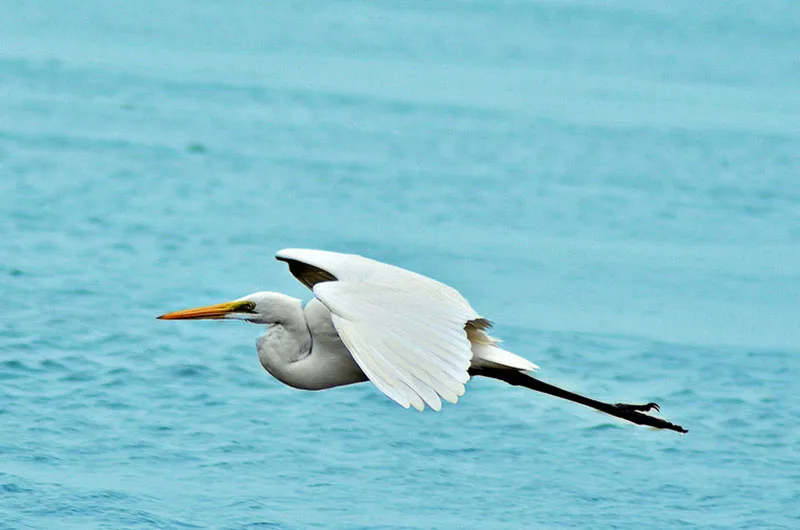Chilika Lake, designated as a Ramsar Wetland of International Importance, is renowned for its rich biodiversity and ecological significance. The lake is separated from the Bay of Bengal by a narrow sandbar, known as the Bar-mouth, which opens and closes periodically. This dynamic interaction between freshwater and seawater creates a unique habitat that supports a diverse array of flora and fauna.
The lake is a critical habitat for various species of fish, crustaceans, and prawns, contributing significantly to the regional fishery resources. The vibrant ecosystem of Chilika Lake includes extensive seagrass beds, mangrove forests, and marshy wetlands, providing a conducive environment for the breeding and nurturing of marine life.
Chilika Lake serves as a haven for over 225 species of migratory and resident birds, making it a paradise for birdwatchers and ornithologists. During the winter months, the lake becomes the largest congregation site for migratory birds on the Indian subcontinent. Species such as flamingos, pelicans, herons, and various types of ducks find refuge in the tranquil waters of Chilika, creating a mesmerizing spectacle for nature enthusiasts.
The lake also plays a crucial role in supporting the livelihoods of the local communities. Fisherfolk residing in the numerous villages surrounding the lake depend on its resources for sustenance. Traditional fishing practices, aquaculture initiatives, and eco-tourism activities contribute to the economic well-being of the people in the region.
Efforts have been made to conserve and protect the fragile ecosystem of Chilika Lake. Conservation initiatives include the establishment of the Chilika Development Authority (CDA) to manage and implement sustainable conservation practices. The preservation of this natural treasure not only safeguards the diverse flora and fauna but also ensures the continued prosperity of the communities reliant on its resources.
Chilika Lake stands as a symbol of the delicate balance between nature and human livelihoods. Its unique ecosystem, coupled with its global significance as a biodiversity hotspot, underscores the importance of concerted efforts in preserving and managing such vital natural wonders for future generations.

